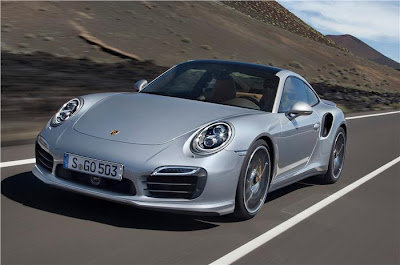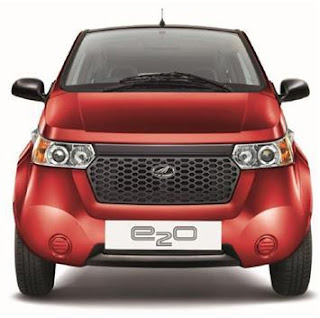2013 Porsche 911 Turbo unveiled.
Porsche will celebrate the 40th anniversary of the Porsche 911 Turbo with the introduction of the fastest, most powerful and most technically sophisticated version yet: the new 991-series.
The sixth generation of the 911 Turbo, which will be unveiled at the Frankfurt motor show in September, will be offered with the choice of two power outputs as Turbo and Turbo S models.
In standard guise, the new four-wheel-drive 911 flagship’s twin-turbocharged 3.8-litre flat six engine produces 20bhp more than its direct predecessor, at 513bhp. That’s double the output of the original 1974 model, whose feisty turbocharged 3.0-litre flat six produced 256bhp.
In more sporting Turbo S guise, the new 911 Turbo’s reserves swell by 30bhp over the previous version to 552bhp. That’s sufficient to provide it with claimed 0-100kph acceleration in 3.1sec, together with a 319kph top speed.
Porsche has yet to confirm the torque rating of its new engine, but indications are that it has risen above the 71.3kgm of the old model, if only slightly.
As with all recent 911 models, the new Turbo has grown in size. Length is up by 40mm, at 4490mm, and width extends 28mm beyond that of the latest Carrera 4 to 1878mm, due to flared rear wings.
The adoption of aluminium in the inner and outer body structure is claimed to bring the new car under the 1570kg kerb weight of the old 911 Turbo for a vastly improved power-to-weight ratio.
The increase in external dimensions brings a significant change in chassis geometry, with the wheelbase growing by 100mm to 2450mm and the front and rear tracks extending well beyond the 1490mm and 1550mm of the old model. Larger wheel housings permit the fitment of 20-inch wheels and those on the Turbo S feature centre-lock wheel nuts.
In line with the latest 911 GT3, the new 911 Turbo receives four-wheel steering. Porsche claims that this provides it with new levels of agility and the ability to lap the Nürburgring in a time that undercuts that of the Carrera GT, at a claimed 7min 30sec. It forms part of a new steering system that adopts electro-mechanical operation for the first time.
Also included is a new active aerodynamic package, with a three-stage front spoiler and a modified three-stage rear spoiler to improve downforce.
Further developments include Porsche Dynamic Chassis Control, which uses hydraulically operated anti-roll bars to reduce body roll, pitch and lift. It comes as standard on the new 911 Turbo S and — in combination with dynamic engine mounts, carbon-ceramic brakes and full LED headlamps — will form part of the Sport Chrono package available as an option on the 911 Turbo.
Reacting to criticism of the old 911 Turbo, the new model receives a so-called ‘sound symposer’ to accentuate the sound of the inlet manifold and heighten the overall acoustic qualities of the revised engine.
For the first time since its introduction to the Porsche line-up four decades ago, the 911 Turbo goes without a manual gearbox. As with the latest 911 GT3, the new model will be sold exclusively with a seven-speed dual-clutch auto.
Also included is a revised multi-plate-clutch four-wheel drive system. It now sports water cooling for improved efficiency and an added ability to place the 911 Turbo’s reserves to the road.
The sixth generation of the 911 Turbo, which will be unveiled at the Frankfurt motor show in September, will be offered with the choice of two power outputs as Turbo and Turbo S models.
In standard guise, the new four-wheel-drive 911 flagship’s twin-turbocharged 3.8-litre flat six engine produces 20bhp more than its direct predecessor, at 513bhp. That’s double the output of the original 1974 model, whose feisty turbocharged 3.0-litre flat six produced 256bhp.
In more sporting Turbo S guise, the new 911 Turbo’s reserves swell by 30bhp over the previous version to 552bhp. That’s sufficient to provide it with claimed 0-100kph acceleration in 3.1sec, together with a 319kph top speed.
Porsche has yet to confirm the torque rating of its new engine, but indications are that it has risen above the 71.3kgm of the old model, if only slightly.
As with all recent 911 models, the new Turbo has grown in size. Length is up by 40mm, at 4490mm, and width extends 28mm beyond that of the latest Carrera 4 to 1878mm, due to flared rear wings.
The adoption of aluminium in the inner and outer body structure is claimed to bring the new car under the 1570kg kerb weight of the old 911 Turbo for a vastly improved power-to-weight ratio.
The increase in external dimensions brings a significant change in chassis geometry, with the wheelbase growing by 100mm to 2450mm and the front and rear tracks extending well beyond the 1490mm and 1550mm of the old model. Larger wheel housings permit the fitment of 20-inch wheels and those on the Turbo S feature centre-lock wheel nuts.
In line with the latest 911 GT3, the new 911 Turbo receives four-wheel steering. Porsche claims that this provides it with new levels of agility and the ability to lap the Nürburgring in a time that undercuts that of the Carrera GT, at a claimed 7min 30sec. It forms part of a new steering system that adopts electro-mechanical operation for the first time.
Also included is a new active aerodynamic package, with a three-stage front spoiler and a modified three-stage rear spoiler to improve downforce.
Further developments include Porsche Dynamic Chassis Control, which uses hydraulically operated anti-roll bars to reduce body roll, pitch and lift. It comes as standard on the new 911 Turbo S and — in combination with dynamic engine mounts, carbon-ceramic brakes and full LED headlamps — will form part of the Sport Chrono package available as an option on the 911 Turbo.
Reacting to criticism of the old 911 Turbo, the new model receives a so-called ‘sound symposer’ to accentuate the sound of the inlet manifold and heighten the overall acoustic qualities of the revised engine.
For the first time since its introduction to the Porsche line-up four decades ago, the 911 Turbo goes without a manual gearbox. As with the latest 911 GT3, the new model will be sold exclusively with a seven-speed dual-clutch auto.
Also included is a revised multi-plate-clutch four-wheel drive system. It now sports water cooling for improved efficiency and an added ability to place the 911 Turbo’s reserves to the road.




Comments
Post a Comment